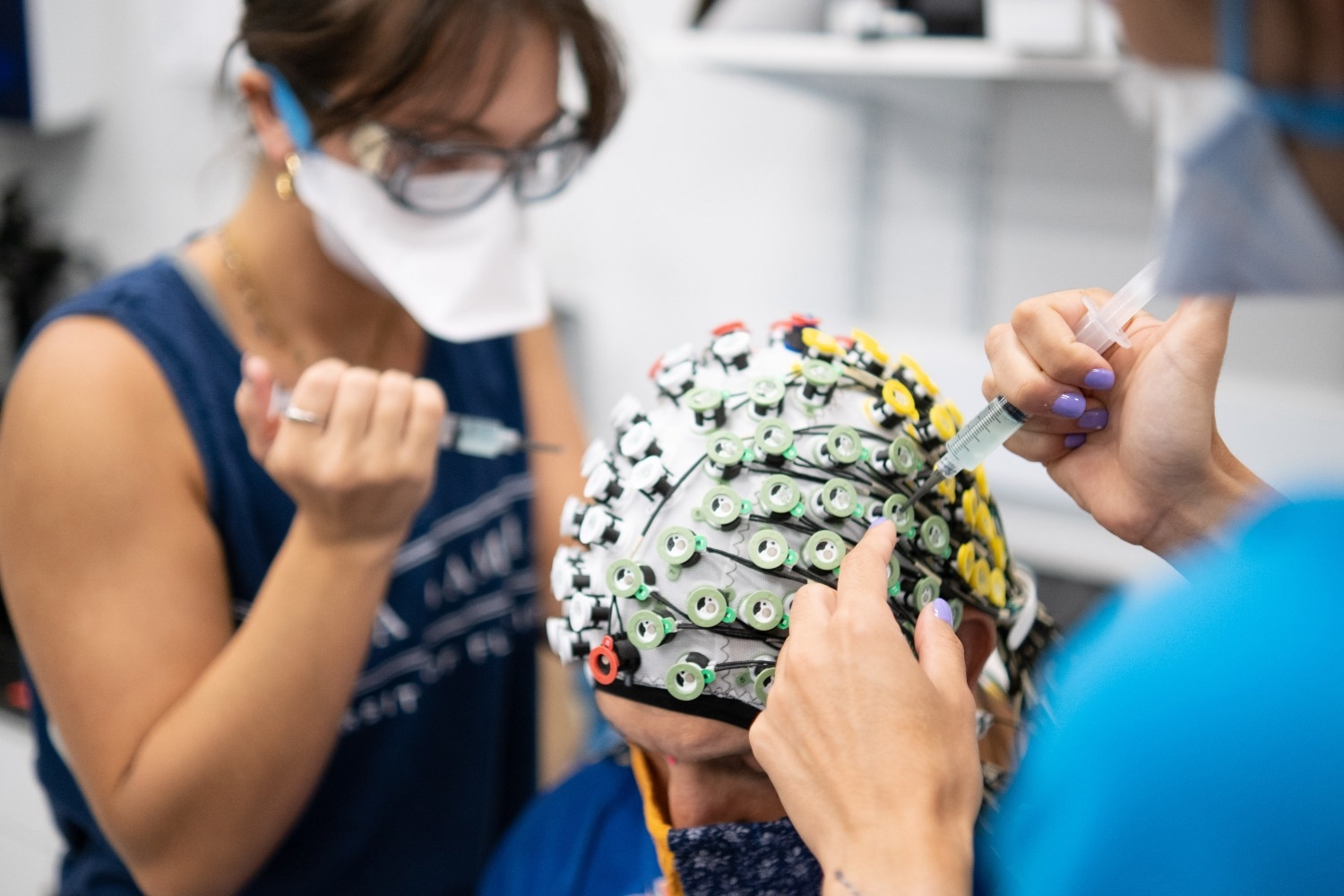
More than 100 electrodes capture fine detail of the brain activity of participants while they play a fast-paced game of table tennis. Image Credit: Frazier Springfield
Studnicki, together with her advisor, Daniel Ferris, found out that the brains of table tennis players react in a very different manner to machine or human opponents. Against the impenetrability of a ball machine, players’ brains scrambled themselves in expectation of the next serve. With the evident cues that a human opponent was about to serve, their neurons hummed in unison, apparently confident of their next move.
The outcomes have consequences for sports training, thereby indicating that human opponents offer a dash of realism that cannot be substituted with machine helpers. And as robots grow to be highly common, understanding the response of brains could help make the artificial companions highly naturalistic.
Robots are getting more ubiquitous. You have companies like Boston Dynamics that are building robots that can interact with humans and other companies that are building socially assistive robots that help the elderly.
Daniel Ferris, Professor of Biomedical Engineering, University of Florida
Ferris added “Humans interacting with robots is going to be different than when they interact with other humans. Our long-term goal is to try to understand how the brain reacts to these differences.”
Ferris’s laboratory has long studied the response of the brain to motor tasks and visual cues like running and walking. Ferris wished to upgrade to studying complicated and fast-paced action when Studnicki, with her tennis background, collaborated with the research group.
So we literally scaled things down to table tennis and asked all the same questions we had for tennis before.
Daniel Ferris, Professor of Biomedical Engineering, University of Florida
Yet, the smaller movements of table tennis needed innovation to make up for them. Ferris and Studnicki doubled the 120 electrodes in a regular brain-scanning cap, each bonus electrode offering a control for the quick head movements at the time of a table tennis match.
With the availability of all such electrodes scanning the brain activity of players, Studnicki and Ferris were capable of tuning into the brain region that converts sensory information into movement. This area is called the parieto-occipital cortex.
It takes all your senses – visual, vestibular, auditory – and it gives information on creating your motor plan. It’s been studied a lot for simple tasks, like reaching and grasping, but all of them are stationary. We wanted to understand how it worked for complex movements like tracking a ball in space and intercepting it, and table tennis was perfect for this.
Amanda Studnicki, Graduate Student, University of Florida
The scientists examined dozens of hours of play against both Studnicki and the ball machine. When playing against another human, the neurons of the player functioned in unison as if they were all speaking the same language.
On the other hand, when players experienced a ball-serving machine, the neurons present in their brains were not lined up with one another. In the neuroscience world, this is called desynchronization.
Ferris stated, “If we have 100,000 people in a football stadium and they’re all cheering together, that’s like synchronization in the brain, which is a sign the brain is relaxed. If we have those same 100,000 people but they’re all talking to their friends, they’re busy but they’re not in sync. In a lot of cases, that desynchronization is an indication that the brain is doing a lot of calculations as opposed to sitting and idling.”
The research group guesses that the brains of the players were so active while waiting for robotic serves since the machines offer no cues of what they are going to perform next. What is clear is that humans’ brains process these two experiences in very different manners. This shows that training with a machine may not provide the same experience as playing against a real opponent.
Studnicki stated, “I still see a lot of value in practicing with a machine. But I think machines are going to evolve in the next 10 or 20 years, and we could see more naturalistic behaviors for players to practice against.”